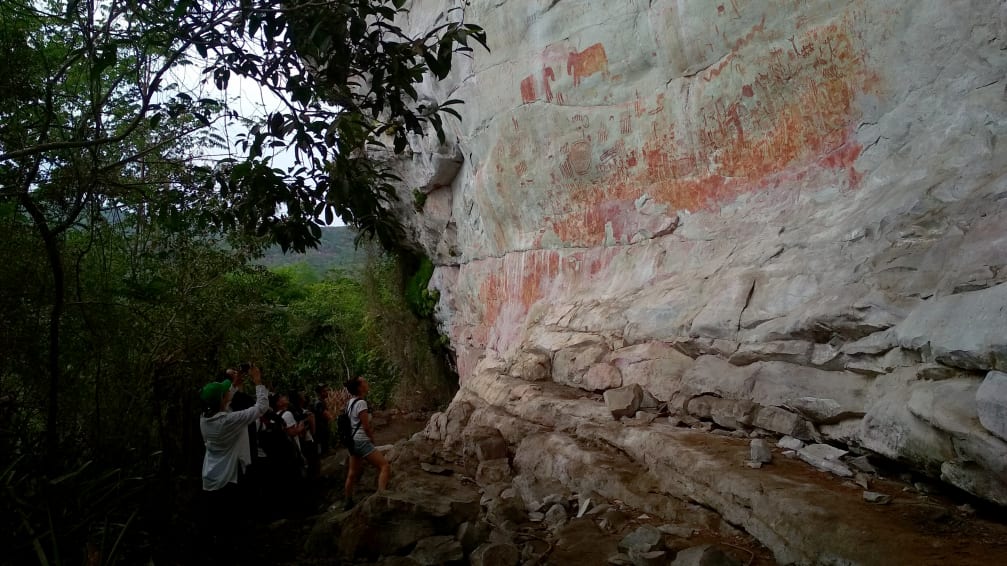Editor’s Note — CNN Travel series often carry sponsorship originating from the countries and regions we profile. However, CNN retains full editorial control over all of its reports. Read the policy.
–
Last updated 2021 Aug 27
Depicting now-extinct ice age animals, such as the elephant-like mastodon, stocky ice age horses and giant sloths, the drawings were painted by some of the first humans to ever reach the Amazon.
As groups of hunter-gatherers traversed the globe in search of food, shelter and land, they were confronted by the enormity — and diversity — of the Amazon Rainforest. Researchers have long been perplexed by the decision of early humans to settle in the Amazon basin, due to its harsh environmental conditions and seemingly inhospitable landscape.
The stunning rock art discovery was made in 2017 as part of an expedition named “Last Journey.” Engineered by a British-Colombian archaeological team funded by the European Research Council, the art will take years to study.

The largest animal seen here is a bit of a mystery to Mark Robinson, a UK-based member of the Last Journey team. Other elements of this painting are very likely a sun and a turtle. Courtesy ERC Last Journey
Spanning nearly eight miles of cliff face, the paintings were kept a secret until they were unveiled by a documentary late last year for the UK’s Channel 4. They are so remote that to get to the rocks, archaeologists had to complete a challenging four-day trek that led to three rock shelters: Cerro Azul, Limoncillos and Cerro Montoya.
José Iriarte, professor of archaeology at Exeter University in the UK, led the expedition to the remote site, alongside Colombian and British researchers.
–
The paintings, located in the Serranía La Lindosa, won’t necessarily provide the answer to why humans decided to settle there, but can certainly give glimpses into an ancient civilization that scientists know little about. “We’re currently undertaking analysis of the images we have been able to document,” said Mark Robinson, a UK-based member of the expedition team.
–
“We’re just finishing up a discussion of the potential megafauna identifications and another manuscript assessing perspectivism and the start of Amazonian artistic traditions.”
–
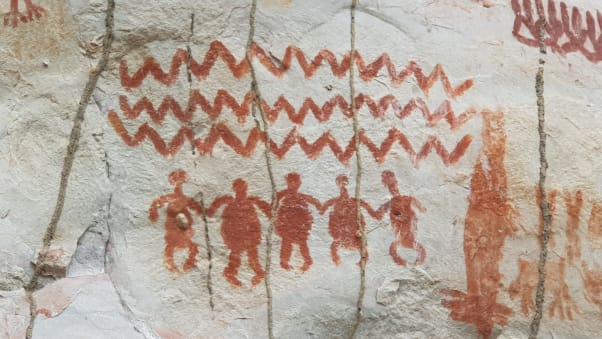
–
‘Sistine Chapel of the ancients’
–
–
–
–
–
Many areas in the country opened up following the peace agreement made between FARC, which stands for Fuerzas Armadas Revolucionarias de Colombia (the Revolutionary Armed Forces of Colombia), and the Colombian government in 2016.
–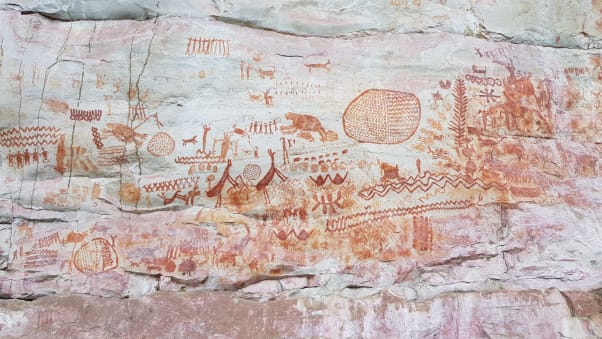 The rock art, dating back some 12,500 years, is in a remote area of Colombia. Courtesy ERC Last Journey
The rock art, dating back some 12,500 years, is in a remote area of Colombia. Courtesy ERC Last Journey
–
The site, which has yet to be named, isn’t the first in the country to have wowed archaeologists with prehistoric paintings. Chiribiquete National Park, the largest protected area in Colombia, is home to 75,000 paintings of hunting scenes, battles, dances and ceremonies, across 60 rock shelters — and dating back to 20,000 BCE.
–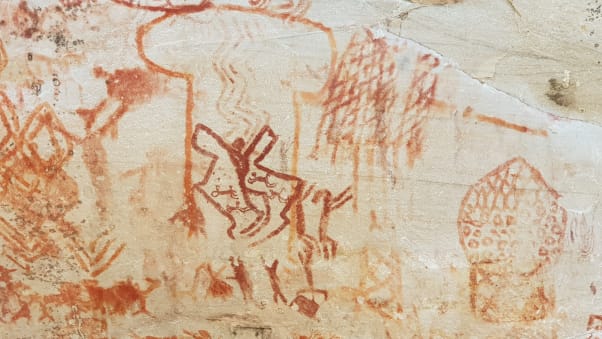 The central image in this painting is “such a bizarre one,” researcher Mark Robinson said. The figure is in a stance typical of dancing, or more commonly with monkeys, Robinson said. The tiny figures around it are monkeys, he said. Courtesy ERC Last Journey
The central image in this painting is “such a bizarre one,” researcher Mark Robinson said. The figure is in a stance typical of dancing, or more commonly with monkeys, Robinson said. The tiny figures around it are monkeys, he said. Courtesy ERC Last Journey
–
Where to see ancient rock art now
Rock art is notoriously difficult to date, but adjacent materials, such as the tools that were used to create the images were tested to date the site. Researchers have also identified animals that are now extinct, which helps with the dating process. –
–
–
Returning to the area is a “distant reality” at the moment due to the ongoing coronavirus pandemic, explained Robinson, a professor at the University of Exeter. However, the team remains hopeful it can return in 2022.
–
–
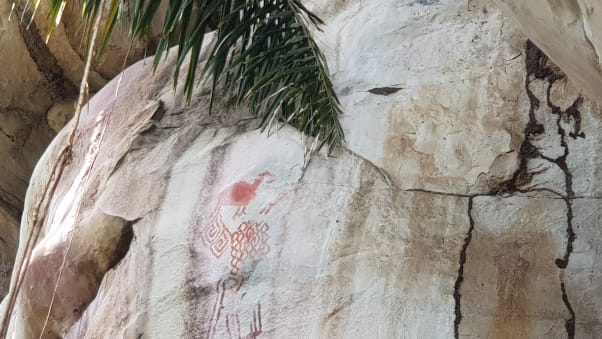 Researchers believe this figure, located high on a rock face, could be a Macrauchenia, a now-extinct genus related to the llama. Courtesy ERC Last Journey
Researchers believe this figure, located high on a rock face, could be a Macrauchenia, a now-extinct genus related to the llama. Courtesy ERC Last Journey
–
–
–

Follow CNN
(For the source of this, and many other equally intriguing and important articles, please visit: https://www.cnn.com/travel/article/rock-art-serrania-la-lindosa-colombia-last-journey-scn/index.html)









